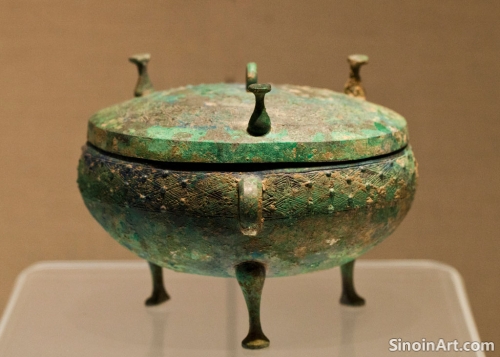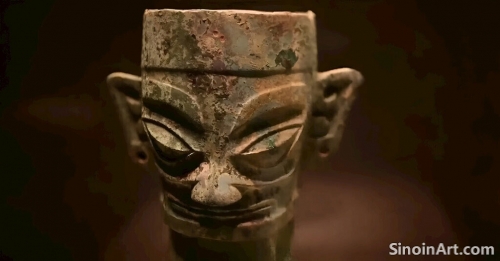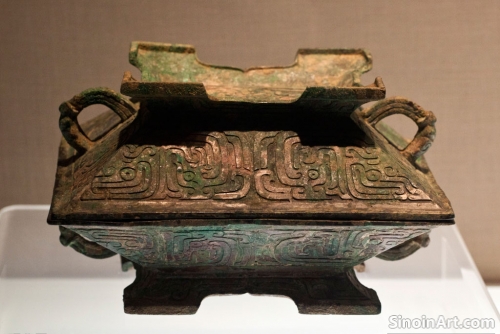Bronze Ware and the Development of Ancient Chinese Writing: Scripts, Inscriptions, and the Communication of Ideas
|
The development of ancient Chinese writing systems was deeply intertwined with the production and use of bronze ware, with many of the earliest forms of writing appearing as inscriptions on these objects. This interrelation highlights the importance of both writing and bronze in communicating information, preserving knowledge, and shaping the cultural landscape of ancient China. The use of bronze as a recording medium helped to shape the way that written Chinese evolved over time. The study of bronze ware and the written language that is often present on it helps to create a fuller and more complete picture of ancient Chinese culture.  The earliest bronze inscriptions, known as jinwen (金文), utilized stylized characters that reflected the techniques used in metal carving. The forms and designs of the early written word were profoundly influenced by their use in the bronze medium. The care that went into their design is a testament to the importance that was placed on written communication and its lasting influence.  The evolution of different script styles over time can be clearly traced through bronze inscriptions, from the archaic forms of the Shang Dynasty to the more regularized forms of the Zhou and later periods. The study of the inscriptions on these objects provides valuable information about the development of the written word over time. The changes in the styles of writing reflect an important component of the overall changes in Chinese culture.  Bronze inscriptions were used to record historical events, ritual practices, and legal codes, establishing the importance of writing as a means of preserving and transmitting information for posterity. The use of written language on these artifacts also helped to underscore their importance and also the importance of accurate record keeping in ancient China. The study of writing on bronze objects helps to reveal the complex interplay between language, power, and culture in ancient China, highlighting the role of bronze in the development and transmission of ancient Chinese knowledge. The careful study of the inscriptions helps to better illuminate both the artistic and technical aspects of their creation, and also provides a link to the people who created and used them. |
Tag : bronze inscriptions, Chinese writing, ancient scripts, jinwen, language development
Related information
- The Ritual Use of Bronze Mirrors in Ancient China: Connecting Worlds and Warding Off Evil
- The Evolution of Bronze Bell Design in China: From Simple Forms to Complex Chimes
- The Influence of Tang Dynasty Aesthetics on Later Bronze Ware Design
- The Influence of Bronze Ware on the Development of Ancient Chinese Military Strategy and Tactics
- Bronze Vessels and the Concept of "Li" in Ancient China: Ritual Order and Social Harmony
This article explores the ritual use of bronze mirrors in ancient China, highlighting their role in guiding souls in the afterlife, in divination practices, in warding off evil, and demonstrating the powerful spiritual beliefs associated with these reflective objects.
This article explores the evolution of bronze bell design in China, highlighting the transition from simple bells to complex bianzhong chimes, the development of tuning techniques, and their significance in both music and ritual.
This article explores the influence of Tang Dynasty aesthetics on later bronze ware design, highlighting the shift toward more refined forms, delicate decorations, naturalistic motifs, and how these changes reflected a broader change in cultural tastes.
This article explores the influence of bronze ware on ancient Chinese military strategy and tactics, highlighting its role in the development of weapons, armor, chariots, and how these technologies transformed the nature of ancient warfare.
This article explores the connection between bronze vessels and the concept of li (禮) in ancient China, emphasizing how the proper use of vessels in rituals reinforced social order, hierarchy, and contributed to maintaining social harmony.